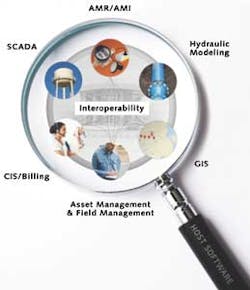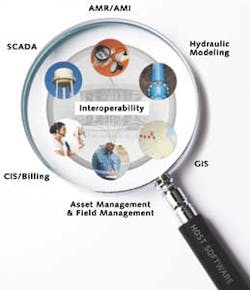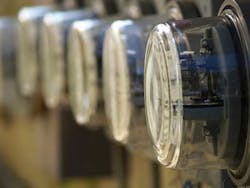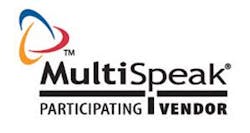By Kent Murray
Leveraging Knowledge to Do More than Ever
Evolution is spurred by two things: the need to survive in challenging times and the ability to adapt to change. These two drivers are now propelling the water industry beyond methods of delivery and well beyond simple metering and billing. The innovations of the past few years have led to unparalleled increases in operational efficiencies in automatic meter reading (AMR) and advanced metering infrastructure (AMI) systems. In turn, certain system providers are leading the industry forward by leveraging those gains in new ways.
As one example, Neptune has developed the Connected Utility Partnership Program™ to help its utility customers implement a foundational system to manage and optimize the entire water distribution network. As such, the same data that has revolutionized meter reading and billing can be shared and leveraged across other systems and departments within the utility. Those water utilities that have implemented intelligent AMR/AMI systems for utility management are now well positioned for the next step - Beyond Billing Evolution.
Breaking Down Barriers
Innovation is abrogating isolation. No longer do management, finance, engineering, operations, maintenance, and customer service have to function as separate "silos" within the water utility.
Full system interoperability removes barriers to information and knowledge, allowing different utility departments to share detailed consumption data, alerts, events, and analyses across multiple graphical, interactive and inter- communicating application platforms. AMR/AMI data can be consolidated with valuable intelligence gathered from Advanced Sensor Infrastructure™ (ASI) in the field - all for the first time and all in real time.
Now water utilities can expand past utilizing consumption data for traditional on-cycle billing and share what truly matters - critical data - with assets, systems and people to correlate events. By aligning AMR/AMI data with information from other application systems, the water utility can form a comprehensive distribution network monitoring system that includes such functions as water quality monitoring and pressure management. Recognizing how data from various systems and departments connects can help identify patterns, enable more proactive solutions and support holistic decision making. It all amounts to tremendous strides in operational efficiency.
Making Better Calls as a Connected Utility
As part of Neptune's Connected Utility Partnership Program, those utilities can now opt to incorporate IDModeling's flagship software solution, Sedarū®, which works in tandem with Neptune's N_SIGHT™ software suite.
Through Sedarū, meter readings, consumption trending, and leak, tamper and reverse flow data from Neptune's AMR/AMI systems can be integrated easily with data from other utility systems, including information on pressure monitoring, water quality monitoring, sanitary sewer overflow (SSO), field work productivity from CMMS, and operational alerts from SCADA. Visual correlation of the data set is simplified by an intuitive drag-and-drop dashboard and touchscreen Tile-Bars™ as well as a GIS-based environment where data can be compared on layered maps.
Analysis and simulations, alerts and communication, and work orders can also be easily shared on mobile applications, allowing real-time collaboration between utility management and field personnel for more proactive problem solving and better decision making.
Sedarū can help leverage Neptune metering and consumption data beyond billing for utilities at any stage of AMR/AMI and can grow with them as their business needs change over time. For instance, personnel using Neptune's handheld or mobile RF metering technology can use Sedarū to troubleshoot invalid readings and generate work orders to investigate possible water theft.
By streamlining field maintenance workflows, the utility can eliminate wasted trips and accelerate service turnarounds. The value of the combined Neptune-Sedarū solution increases with the adoption of fixed network AMI infrastructure, enabling personnel across the utility to evaluate the conditions and performance of meters, collectors and other assets in the field, from leaks at devices to backflows in common areas along distribution lines.
A Case Study in Interoperability: Indio Water Authority, California
One Neptune utility customer, California's Indio Water Authority, is looking to communicate more than just meter reads across its departments. Pairing Sedarū with Neptune's R900® RF AMR technology, Indio Water Authority is positioned to achieve breakthrough functionality for monitoring, analysis, automation, and field mobility.
In fact, Indio helped develop Sedarū. The original driver of what would become Sedarū was planning - where to place pipes, justify projects and prioritize capital investment. There was a concern, however, that upper management was not receiving all the information necessary to make well-informed decisions. As it was, they'd have to search for it, with no way to congregate information from different systems and departments all together in one location.
Sedarū's open format also made data useful to other people in the organization besides upper management. Indio worked together with different staff members to integrate asset management functions and applications including SCADA, GIS, backflow, and inspection. The software's ability to coordinate data, communications and personnel in real time allows Indio managers in the office to view GIS map overlays and see instantly whether a valve is turned on or off. With real-time information, they can respond proactively, knowing the locations of crews and vehicles.
Indio now aims to integrate Neptune AMR with SCADA data to make it available to management and perform more analytics, such as comparisons of production data with consumption data. In addition, Indio can more proactively switch out meters as well as help prioritize meters that need replacing.
The Future We All Share
This is just the beginning - not just for Indio Water Authority but for water utilities across North America as well. Interoperability is unlocking the potential value of data trapped in departmental silos. With Beyond Billing Evolution, AMR/AMI data is now being shared to connect and communicate critical information across all utility operations, to and from the field.
Water utilities can now realize real-time organization improvements to drive water operations and efficiency, streamline field maintenance workflows and minimize response time. Further, with analyzed, actionable data, they can better answer industry challenges: assessing and prioritizing capital infrastructure planning (CIP); addressing water loss as well as water and energy conservation; complying with government regulations; and optimizing customer service and consumer engagement.
To process more in order to do more entails not so much adapting to changing conditions but adapting conditions themselves to unleash new opportunities moving forward. Welcome to the dawn of the Smart Water Distribution Network.
Parallels from Our Electric Utility Brethren
It all comes back to working together to solve today's problems and to provide future-proofed innovations. The electric utility industry has proved what's possible through successful cooperation.








